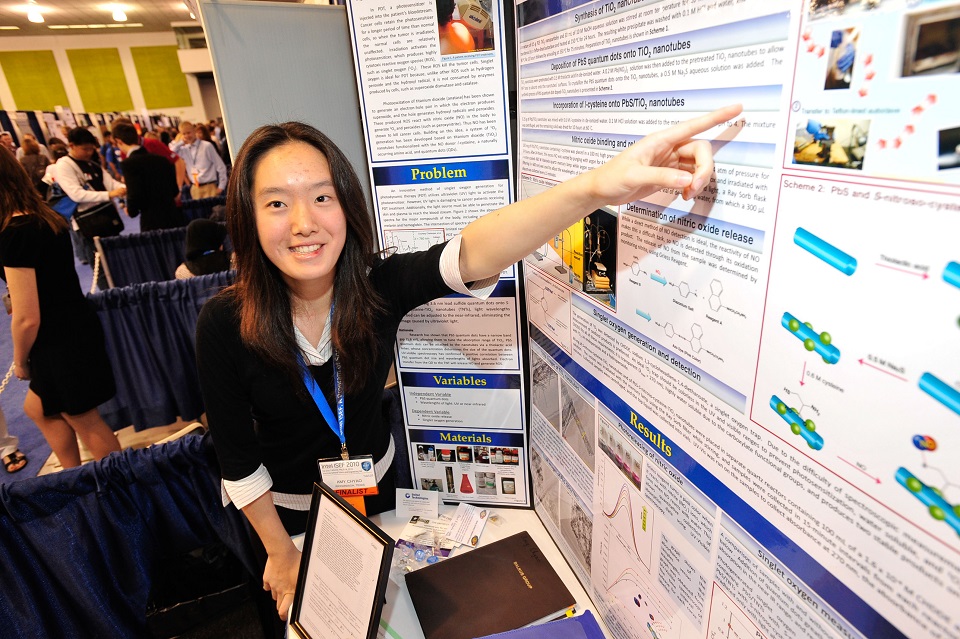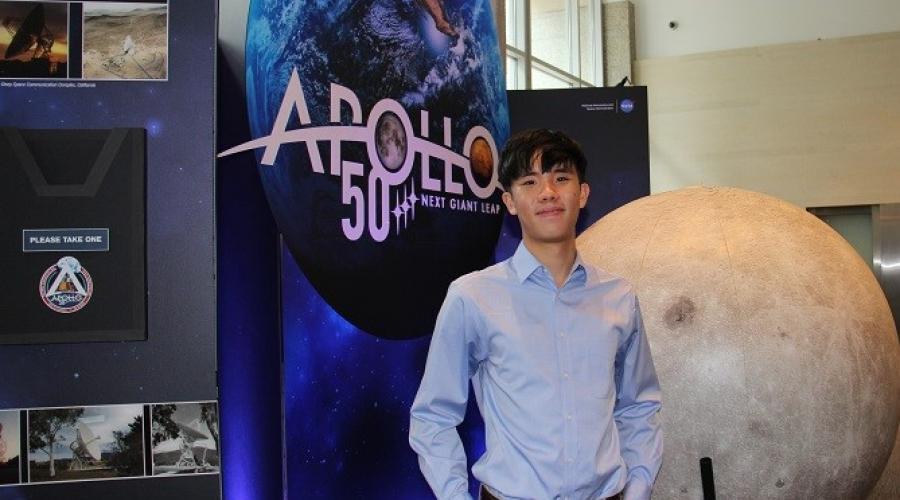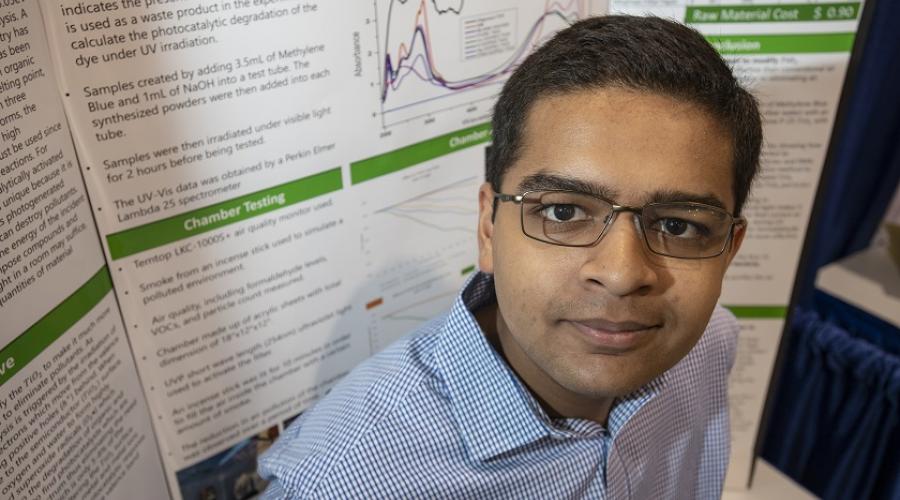Thabit Pulak’s Arsenic Filter Wins Him a Trip to EPA Expo
Thabit Pulak of Richardson, Texas was the winner of the Patrick H. Hurd Sustainability Award offered by the Environmental Protection Agency (EPA) at the Intel International Science and Engineering Fair (Intel ISEF) 2012. As part of this award, Thabit was invited to attend and exhibit at the National Sustainable Design Expo, home of the P3: People, Prosperity and the Planet Student Design Competition for Sustainability this April in Washington, D.C.

Can you provide a short description of your research project and how you initially became interested in this topic?
Ethnically, I am from Bangladesh, which is a poverty-stricken nation. Amongst the many problems the country faces, one of the main problems that personally caught my eye was that of arsenic water poisoning. Arsenic is a naturally occurring element which leaks into groundwater in Bangladesh, where villagers often use water wells or deep-tube wells. Ingesting arsenic continuously results in arsenicosis, which is a chronic state of arsenic poisoning that gradually develops into various types of bodily cancers, like skin cancer, kidney cancer, and so on. While I was in Bangladesh in summer 2011, I met a neighbor who was afflicted by arsenicosis. It pained me to see that he had little options left for survival, as his condition was long untreated, and had progressed.
Studying the issue closer, I discovered a solution for filtering arsenic from water did exist, but it was very expensive (nearly $70) for the average villager, who makes around $1 a day. In addition, these filters were only for arsenic, not other bacterial matter. My project was developing an arsenic water filter that could also filter bacteria from water, at an affordable price. I designed my filter in such a way that the whole filter could theoretically be built using materials in a typical village home. My research could potentially benefit the 70 million people world-wide drinking arsenic tainted water.
What was your experience competing at Intel ISEF like?
I had never competed in a Society-affiliated science fair until 2012, when our school held a science fair in which students could advance to regionals, state, and so on for the first time. Previously, our science fair was just school-wide. So naturally, I was stunned that my project even made it to Intel ISEF. My experience at Intel ISEF was definitely life changing. Up till that point, I hadn’t seen any place that contained so many teenagers that were extremely talented, and doing unprecedented things that had the potential to change the world. I had the opportunity to shake hands with Carl Wieman, Nobel Prize Winner in Physics, and exchange a few words with him. Funny enough, I even bumped into Martin Chalfie, a Nobel Prize Winner in Chemistry, in the convention’s parking lot! The connections I made and the amazing people I met were ultimately what made my first trip to Intel ISEF among the most life-influencing events I’ve ever been to. I am definitely excited to be able to return to Intel ISEF yet again at Phoenix this year!
The trip to the National Sustainable Design Expo was part of the award you received at Intel ISEF 2012. What were the most memorable parts of participating in the Expo?
The Patrick H. Hurd Sustainability Award given to me by the EPA at Intel ISEF 2012 included an all-expense paid trip to Washington, D.C. to attend the annual National Sustainable Design Expo, which is an event where university students working on the nation’s most-applicable environmentally sustainable projects compete for funds to implement their project. I was given a booth to present my project, like the university students competing. These students ranged from sophomores to post-graduates. I had the opportunity to present my project to many amazing people, such as the administrator of the EPA, Bob Perciasepe! I was also able to talk to various university students about their research. It was interesting to glimpse the research undertaken by undergraduates and graduate students. Up until then, I had only seen high school projects done by teenagers like myself. Looking at these projects made me feel very hopeful, because I saw that what they were doing was not so different from what I was working on.
What are you up to now?
Research-wise, I am now working on affordable testing methodologies for arsenic-contaminated water. Just like filtration, detecting arsenic in water is quite expensive. Thousands of people do not know arsenic is in their water, and despite government efforts to test for arsenic, existing methods are expensive. My work on this project earned me a grand-prize from the Dallas Regional Fair, allowing me to directly qualify for Intel ISEF 2013, which I am quite excited about.
After Intel ISEF, I established the first science club at my school, to encourage more students to participate in the science fair and pursue topics that can make an impact in the world. This year, my school sent 7 students to the regional science fair, all of them members of the science club. I pushed for the building of our school’s first library student conference room, which would be a place where students could talk and discuss ideas with each other, and help foster their thoughts, and thus ensuring that any “Spark of Genius” will not be lost. Recently, I’ve partnered up with a student from UC Berkley who runs a startup which builds conference rooms, and struck a proposed deal with him which will help further enhance the school’s conference room by sound-proofing it.
Do you have any advice for other young students interested in science?
Don’t let your age be a blocking factor in anything you try to solve in science. There’s no such thing as a problem that only “adults” can attempt to help solve. Attending the EPA National Sustainable Design Expo really helped me feel that age is no longer a relevant mode of measuring one’s contributions. Inside the Expo, I was a scientist, working to solve problems for the greater good, just like everyone else.
Also, if you desire on pursuing a career in science, work towards solving a problem the world faces, and be passionate about it. I am working towards fighting the decades-long problem of arsenic poisoning in underdeveloped countries, not only because of my love of science, but because I have seen the problem and I have a passion to solve it.


